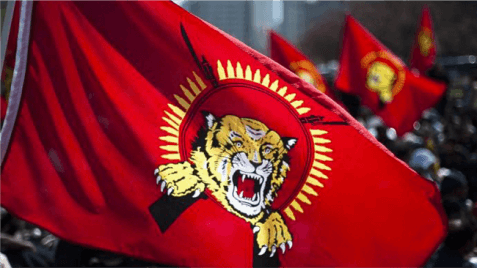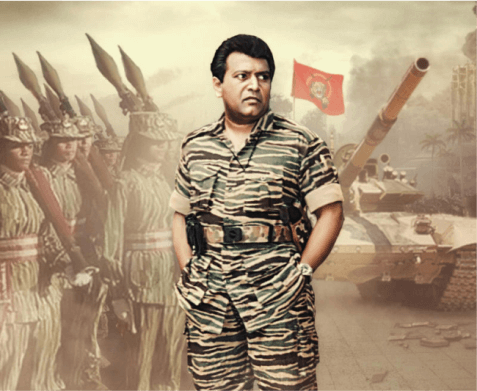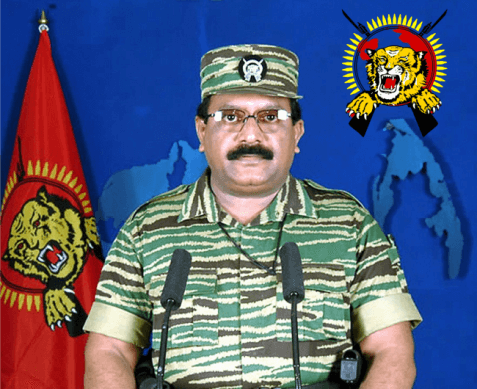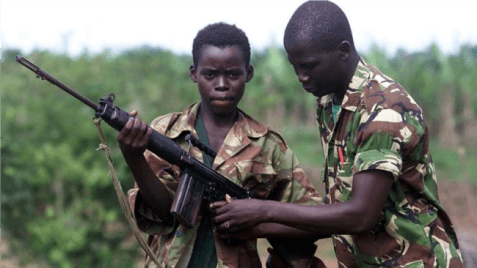What is the full form of LTTELTTE: Liberation Tigers of Tamil EelamLTTE stands for Liberation Tigers of Tamil Eelam. A separatist organization in Sri Lanka is called the Liberation Tigers of Tamil Eelam (LTTE), sometimes it is referred to as the Tamil Tigers. The LTTE has been pushing for a homeland for Tamils since the 1980s because they believe that the Sinhalese, who comprise most of Sri Lanka's population, are persecuting them. Both the suicide bomb jacket and the use of female suicide bombers were inventions of the LTTE, who are well-known for both. They are responsible for nearly 200 suicide assaults, twelve high-profile killings, and over seventy thousand fatalities who lost in their struggle against the government. The 26-year battle was deemed concluded by the Sri Lankan government in May 2009. The military said that it had killed the LTTE's mysterious commander, Vellupillai Prabhakaran, in addition to crushing the rebels. The organisation issued a statement acknowledging defeat and announcing its decision to release its weapons. Although the gang has already shown itself to be a brutal guerilla force, several analysts caution that it may still be too early to write them out. The LTTE and the Sri Lankan military have been charged with kidnapping, exploitation, recruitment, and using young soldiers. 
Who are the Tamils?Sri Lanka is a 21 million-person island off the southern coast of India. Sri Lanka is home to an ethnic group known as the Tamils. They are primarily located in the state of Tamil Nadu in south India. According to a government census conducted in 2001, most Tamils are found in northern and eastern Sri Lanka, where they make up around 10% of the country's total population. They differ from the four-fifths of Sri Lankans who are Sinhalese-members of a predominantly Buddhist, Sinhala-speaking ethnic group-because of their religion (the majority are Hindu) and their language. Most Sri Lankans believed the minority Tamils were complicit in imperial control under the British reign of Sri Lanka as Ceylon and resented what they saw as special privileges for the Tamils. The Sinhalese majority has ruled Sri Lanka since it gained its independence in 1948. Tamil and Sinhalese Christians, ethnic Muslims, and other people of Sri Lankan descent make up the remaining population. What Kind of Terrorist Attacks Has the LTTE Undertaken?The LTTE, which might have anywhere from 7,000 to 15,000 armed militants, is well-known for its suicide bombings. The organisation has carried out about 200 suicide assaults since the late 1980s. Targets have included business buildings, Buddhist temples, and transportation hubs. The LTTE is credited by the Federal Bureau of Investigation (FBI) with developing the suicide belt and being the first group to employ women in suicide operations. LTTE combatants wear cyanide capsules around their necks, to be able to kill themselves if they are caught. In addition to suicide bombing, the LTTE has also killed civilians and government officials in Sri Lanka. They have carried out the killings by shooting them down while using conventional explosives and claymore mines to assault political and civilian objectives. The LTTE charged the U.S. State Department with kidnapping and extortion in April 2008. The research claims that since 2006, more than 5,000 people have died due to LTTE and government breaches of the 2002 cease-fire treaty. Public servants have made up a large portion of the LTTE's victims. The LTTE has been charged with killing around a dozen prominent individuals over the last twenty years, including two state presidents. The LTTE is accused of carrying out assassinations and assaults against government figures, including the killings of former Indian Prime Minister Rajiv Gandhi in May 1991 during a campaign rally in India. They have also assassinated Sri Lankan President Ranasinghe Premadasa in May 1993; Neelan Thiruchelvam, a member of parliament and an ethnic Tamil active in a government-sponsored peace project in July 1999. Moreover, LTTE is also responsible for two suicide bombs in Colombo in December 1999; the assassination of Foreign Minister Lakshman Kadirgamar in August 2005 and the assassination of T. Maheswaran in January 2008. (He was a lawmaker from the opposition United National Party (UNP)). Furthermore, LTTE was involved in the January 2008 assassination of Sri Lankan Nation-Building Minister D. M. Dassanayake; and the assassination of two members of the political group and paramilitary organisation Tamil Makkal Viduthala in February 2008. 
How Have Recent Peace Efforts Fared?Although the LTTE remained active in the months before September 11, 2001, there was a pause in fighting until a cease-fire deal in February 2002. It's unclear if the 9/11 attacks contributed to this. To establish a long-lasting peace, rebels and the government came to a power-sharing deal later that year. Furthermore, a suicide bomber detonated explosives attached to her body in Colombo in July 2004, killing four policemen in addition to herself. The LTTE charged that the assault was "an operation of certain individuals who are seeking to derail peace efforts" and that the police and military had supported a rebel LTTE commander who had carried out the terror attack. The December 2004 earthquake and tsunami, killed more than 30,000 people in Sri Lanka and brought about a measure of peace between the rebels and the government. However, it did not ease tensions; instead, it made them even worse. Moreover, the death of Sri Lanka's foreign minister, Lakshman Kadirgamar, in August 2005-for which the rebels are held accountable broke the truce and once more brought the LTTE into conflict with the Sri Lankan government. The conflict had gotten to its worst point by July 2006 compared to the time before the 2002 truce. The United Nations claims that thousands of people have been forced to evacuate their homes due to the most recent outbreak of violence, which has left hundreds dead. In January 2008, the Sri Lankan government officially renounced the 2002 cease-fire pact, and Nordic cease-fire observers left the nation. As military operations against the Tigers progressed, the government declared victory over the insurgent organization in May 2009. The most significant number of fatalities in a single year was recorded in 2009, when more than 13,000 people died, including over 9,000 people, according to the South Asia Terrorist Portal, a terrorism database. This was the highest number of fatalities ever recorded. Does The LTTE Have Ties to Al-Qaeda Or Other Terrorist Groups?According to experts, Al-Qaeda, its extreme Islamist branches, and other terrorist organizations have no operational ties to the religious, patriotic LTTE. But Palestinian organizations like Hamas and the Al-Aqsa Martyrs Brigades have also imitated aspects of the Tigers' advances, such as the "jacket" equipment used by individual suicide attacks. According to analysts, the LTTE trained alongside the Palestine Liberation Organization in its early years. However, through the black markets for weapons in Cambodia, Thailand, and Myanmar, the gang may still communicate with other terrorist groups. How Does the Sri Lankan Government Handle The LTTE?The Sri Lankan government has actively hunted LTTE fighters since the 2002 cease-fire. The Sri Lankan government effectively gained control of the country's eastern region by the middle of 2007, but it has struggled to put an end to LTTE fighters in the country's north. The Sri Lankan Ministry of Defense lists purported victories over the LTTE in a database on its website. The US has assisted in educating Sri Lankan security officers in counterterrorism-related fields. As reported by the State Department, the Sri Lankan government collaborated with the US authorities to establish the Container Security Initiative and the Megaports programme at the port of Colombo. As reported by the State Department, the Sri Lankan government cooperated with the US authorities. However, the Sri Lankan government has also come under heavy fire for suspected human rights violations. The Sri Lankan authorities have been charged with using child soldiers, exploitation, recruitment, targeted killings, kidnappings, and other crimes similar to the LTTE. An analysis of the many human rights violations committed in Sri Lanka by the LTTE and Sri Lankan forces was published in August 2007 by Human Rights Watch. Human Rights Watch stated in January 2009 that in their continued conflict, both the authorities and the LTTE were putting people in danger. The rules and the LTTE seem to be engaged in a strange competition to see who can demonstrate the slightest concern for the safety of civilians, according to Brad Adams, the organization's Asia director. 
Human Rights ViolationsThe United States Department of State claims that its decision to designate the LTTE as a banned terrorist organization is motivated by claims that the organization does not uphold the conduct standards that are required of resistance movements or what may be referred to as "freedom fighters" and does not safeguard human rights. According to the FBI, the LTTE is "among the most lethal and violent terrorist groups in the world." According to the FBI, "Al-Qaeda in Iraq and other terrorist networks across the world have been inspired by the LTTE's brutal techniques." The same justification has led other nations to prohibit LTTE. Several governments and international organizations have charged the LTTE with assaulting people and enlisting youngsters. The LTTE has been criticized for its lack of use of sexual violence or rape as a strategy despite claims of human rights violations. Yet, there have been rape accusations made against LTTE soldiers. During the murder of Sinhalese in October 1995, the LTTE sexually assaulted a female Sinhalese. The leadership of the LTTE threatened to put several rape suspects to death. Attacks On CiviliansAttacks by the LTTE have frequently been directed against civilian objectives. Attacks were often said to be conducted in retaliation for assaults by the Sri Lankan Army, like in the case of the Anuradhapura massacre, after the Valvettithurai massacre. The Aranthalawa massacre, the Anuradhapura massacre, the Kattankudy mosque massacre, the Kebithigollewa massacre, and the Dehiwala railway explosion are significant crimes. Attacks against financial targets, like the Central Bank explosion, have also claimed the lives of citizens. In the LTTE strikes, 3,700 to 4,100 people died. The LTTE's leader denied reports that his organization had killed innocent Sinhalese citizens, claiming that such acts of terrorism are unacceptable. He claimed that the LTTE instead fought the Home Guard, referring to them as "death squads unleashed on Tamil citizens," as well as Sinhalese migrants who were "introduced to the Tamil districts to seize the land violently." The LTTE believed the state-sponsored Sinhalese communities in the northern and eastern sections of the island to be the historic homeland of Tamils. These areas afterward became "the locations of some of the deadliest bloodshed." The International Crisis Group believes that to "undermine Tamil nationalist arguments for a continuous north-eastern Tamil homeland" and to "establish a barrier to the spread of LTTE rule," the Sri Lankan government executed the army implantation of the Sinhalese majority in Tamil regions. One of the main complaints made by the LTTE was the ongoing migration of Sinhalese immigrants into Tamil regions since the 1950s, which had contributed to the interethnic conflict. Weli Oya was home to many Tamil families who were forced to leave when Sinhalese colonies, some of which were militarized, were established there at the start of the conflict. As a result, the LTTE launched numerous armed attacks against Sinhalese settlers in Weli Oya. The LTTE has also recently started attacking long-time Sinhalese inhabitants in its alleged territories. Additionally, Amnesty International reported that people in several murders of Sinhalese people were neither armed invaders nor house security. Child SoldiersAccording to allegations by the LTTE, children were recruited and employed as soldiers to oppose Sri Lankan government troops. Since 2001, the LTTE has been charged with having up to 5,744 children in armed conflict in its ranks. In response to international criticism, the LTTE said in July 2003 that it would cease recruiting children as fighters. Still, UNICEF and Human Rights Watch have convicted it of breaking its word and enrolling tsunami-orphaned Tamil youngsters. On June 18, 2007, 135 youngsters under the age of 18 were evacuated by the LTTE. UNICEF and the US maintain that child LTTE recruiters have significantly decreased, yet in 2007 they asserted that 506 child recruits still belong to the LTTE. Many youngsters joined the LTTE willingly during the blood stages of the conflict, even if others were forcedly recruited, after seeing or suffering violations by Sri Lankan government troops. They did so to "defend their family or to revenge real or imagined crimes," as they put it. The number of incidents of enforced recruiting, however, significantly outnumbered those of voluntary enlistment during the truce. Human rights abuses include the torturing of political detainees and the murders in Muslim and Sinhalese communities, which have involved the exploitation of several youngsters. 
According to the LTTE, Colonel Karuna, a former LTTE regional leader, was responsible for most child recruitment cases in the east. It is said that Karuna carried on kidnapping and enlisting the child army after defecting from the LTTE and founding the Tamil Makkal Viduthalai Pulikal. The LTTE launched an aggressive recruitment drive to re-hire Karuna's former cadres, including children in armed conflict, not long after she defected. The LTTE re-enlisted many previous child soldiers, sometimes under force. War CrimesWar crimes during the Sri Lankan Civil War were allegedly conducted by the Sri Lankan army and the rebel LTTE, notably in the last months of 2009. The alleged human rights abuses include assaults on people and civilian structures by both parties; killings of fighters and detainees by both parties; forced disappearances by the Sri Lankan military and paramilitary organizations it supports; severe scarcity of food, medication, and safe drinking water for citizens left in the conflict zone; and the enlistment of children as troops by both the Tamil Tigers and the TMVP, a paramilitary unit of the Sri Lankan Army. ConclusionLike contemporary terrorist organizations, the LTTE was founded to fight for the privileges they felt they were entitled to. The LTTE's innovative strategies and remarkable skills contributed to the Sri Lankan government's inability to neutralize the danger. Additionally, not much changed throughout the initial 22 years of the Sri Lankan Civil War. It needed a massive shift to change the policy, and a new administration was formed in late 2005 that focused on the LTTE's main shortcomings while downplaying its capabilities. The government learned an essential lesson from this generational transition. They changed their methods and tapped into outside resources to respond to the challenge in crucial ways, and this new adaptation can be very informative for others. Similar governmental disputes should draw lessons from the Sri Lankan Civil War. This dispute and its resolution can serve as a model for others, telling them what they should and should not do while teaching them the methods and strategies that a terrorist group can employ against them.
Next TopicFull Form
|
 For Videos Join Our Youtube Channel: Join Now
For Videos Join Our Youtube Channel: Join Now
Feedback
- Send your Feedback to [email protected]
Help Others, Please Share










